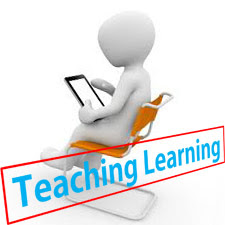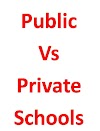Background
The
taxonomy developed by Benjamin Bloom in the 1950s is very popular in the
academia while implementing various pedagogic models. This model provides a
structure that allows teachers to present a lesson to a group of students who
have varied needs and abilities. The students can be arranged based on a very
practical science of learning modality. This model supports the need to
differentiate the curriculum and teaching & learning because of which all students are able to
participate in the same content area during a lesson.
Discussion
The
structure consents to the teacher to lodge a variety of students’ needs by
applying the apt questions and activities for the students then they may
equally participate in the lesson. For example, if the class is learning
domesticated animals as a lesson of a science unit, the teacher can widen
activities at each level of Bloom’s Taxonomy to engage learners related to
their assessed needs and abilities. The model allows a lower functioning
student to respond to one group of questions and activities, while higher
functioning learners are responding to another set of questions and actions
which are all related to the same topic of study.
Bloom's
taxonomy of cognitive domain simply identifies the six level of learning. These
levels are conceptualized by the following terminology.
1.
Knowledge
2.
Comprehension
3.
Application
4.
Analysis
5.
Synthesis
6.
Evaluation
Knowledge
Knowledge
is the first level of learning where the learner responds the topic/idea on the
basis of the knowledge i.e. more specifically on the basis of memorization/remembering
and so on. It may range from simple fact to the entire theory. For example,
Identify any two major barriers of communication in an organization attempts to
test the knowledge of the learners.
Comprehension
Comprehension
is bit higher level learning than the knowledge. Here the learner observes the
circumstances and based on which he comprehends or make a perception about the
scene or event. More specifically, comprehension is possible by translating the
information, interpreting the information or estimating the future trend of the
information.
Application
Application
is the further upper level of learning. Here the learner exposes the application
of the knowledge. This is possible when the learner already has the knowledge
then comprehend it only. This level requires the application of the rule,
principle, theory etc to the new or concrete situation. After the knowledge and
comprehension, the learner is supposed to be able to apply his knowledge to the
concrete situation.
Analysis
Analysis
is that level of knowledge where the learner can analyze to see both the sides
of knowledge. Analysis primarily requires the ability to breakdown the idea
into various pieces to check the relation between and among the parts. It with
no doubt is higher level of ability in comparison to knowledge, comprehension
and application because it not only encourages you to see the parts of the
whole but also the structure of them.
Synthesis
Synthesis
is possible after analysis. It is believed the the whole concept is broken into
various reasonable pieces/parts in analysis whereas those parts are again put
into a whole to see another picture. This is almost the highest level of
knowledge and learning. It is mainly done to see the theme/speech from the
whole, research proposal and scheme for classifying information. You have the
new whole here.
Evaluation
Evaluation
is the final stage of learning. You can judge the value of materials in the
given context. Because things often stand in relative way. Evaluation enables
you to check the relevancy of the information to your context. You will make
the judgments based on definite criteria which may be internal and external. Here
the learner is able to evaluate the knowledge based on all those five levels.
Learning outcomes of this area are the highest cognitive level.
Bloom's
Taxonomy while drafting/responding Questions
They
are equally important in Multiple Choice Questions as well as subjective
Questions.
The
case study questions are also guided by these cognitive levels of Bloom's
taxonomy.
Both
the teachers and students should be very much aware while drafting and
responding the questions. Bloom's taxonomy support in the understanding
questions to a large extent.
Specific Verbs used in different levels of learning of cognitive domain:
|
SN |
Levels |
Useful Action
Verbs |
|
1 |
Knowledge |
Verbs: arrange, define, duplicate, label, list, memorize, name,
order, recognize, relate, recall, repeat, reproduce state. |
|
2 |
Comprehension |
Verbs: classify, describe, discuss, explain, express, identify,
indicate, locate, recognize, report, restate, review, select, translate. |
|
3 |
Application |
Verbs: apply, choose, demonstrate, dramatize, employ,
illustrate, interpret, operate, practice, schedule, sketch, solve, use,
write. |
|
4 |
Analysis |
Verbs: analyze, appraise, calculate, categorize, compare,
contrast, criticize, differentiate, discriminate, distinguish, examine,
experiment, question, test. |
|
5 |
Synthesis |
Verbs: arrange, assemble, collect, compose, construct, create,
design, develop, formulate, manage, organize, plan, prepare, propose, set up,
write. |
|
6 |
Evaluation |
Verbs: appraise, argue, assess, attach, choose compare, defend
estimate, judge, predict, rate, core, select, support, value, evaluate. |
Uses of Bloom's Taxonomy
- For mapping curriculum,
- To frame data about learning,
- It is useful in designing an assessment,
- To improve an assessment,
- The teacher is benefited on design a ‘What now?” after-assessment assignment,
- It can be used to create content-based team-building games,
- It provides learning feedback,
- Support in promote meta-cognition in students,
- Help in revising writing with students,
- It is more useful in grouping the students in the class,
- Create literature circles,
- Support to personalize learning,
- It supports students in self-directed learning,
- It guides inquiry-based learning,
- It create ‘if you finish your work early’ assignments,
- Support in framing letter grades,
- Learning reflection journals,
- Visualize student progress over a period of time,
- Create tiered assignments,
- Frame choice boards,
- Content-based bell ringers,
- Model a skill/competency via given Bloom’s level,
- It is also used to frame a mini-lesson,
- It is used to structure a write-around,
- Differentiate instruction,
- Guide your own teacher professional development,
- Smarter exit slips,
- Guide research projects,
- Simplify an assessment as a response-to-intervention,
- Increase the complexity of an assessment to challenge high-achieving students,
- Create question stems,
- Help students create their own reading response prompts,
- Combine with a KWL chart before, during, or after a lesson,
- Create a digital citizenship campaign,
- Self-monitor own understanding of a target over the course of a lesson/unit,
- Provide ‘sync points’ in Sync Teaching,
- Skimming and responding to current events becomes easier with the use of this taxonomy,
- Summarize a reading passage,
- Structure a formal classroom discussion,
- Evaluate the winner in a debate,
- Create a Combination Learning blend,
- Organize your own digital teaching materials on Google Drive,
- Evaluate the historical significance of a person or event,
- Create a digital scavenger hunt,
- Curate student digital portfolio artifacts,
- It helps to refine and improve questions,
- It is useful to brainstorm essay topics or ‘angles,
- This taxonomy helps in framing the evolution of an argument,
- It helps in planning a podcast or video series around a topic and
- Last but not the least, Bloom's Taxonomy supports students during student-led conferences
Conclusion
Bloom's Taxonomy is very important to those who really want to engage in pedagogical task. There are different levels of learning in cognitive domain of the learners which should be understood both by teachers and students if they wish to achieve the goal of the teaching & learning.
References
Timilsena (2020) Discussion Platform to Teachers and Students
Major categories in the cognitive domain of the taxonomy of
educational objectives (Bloom, 1956).










0 Comments